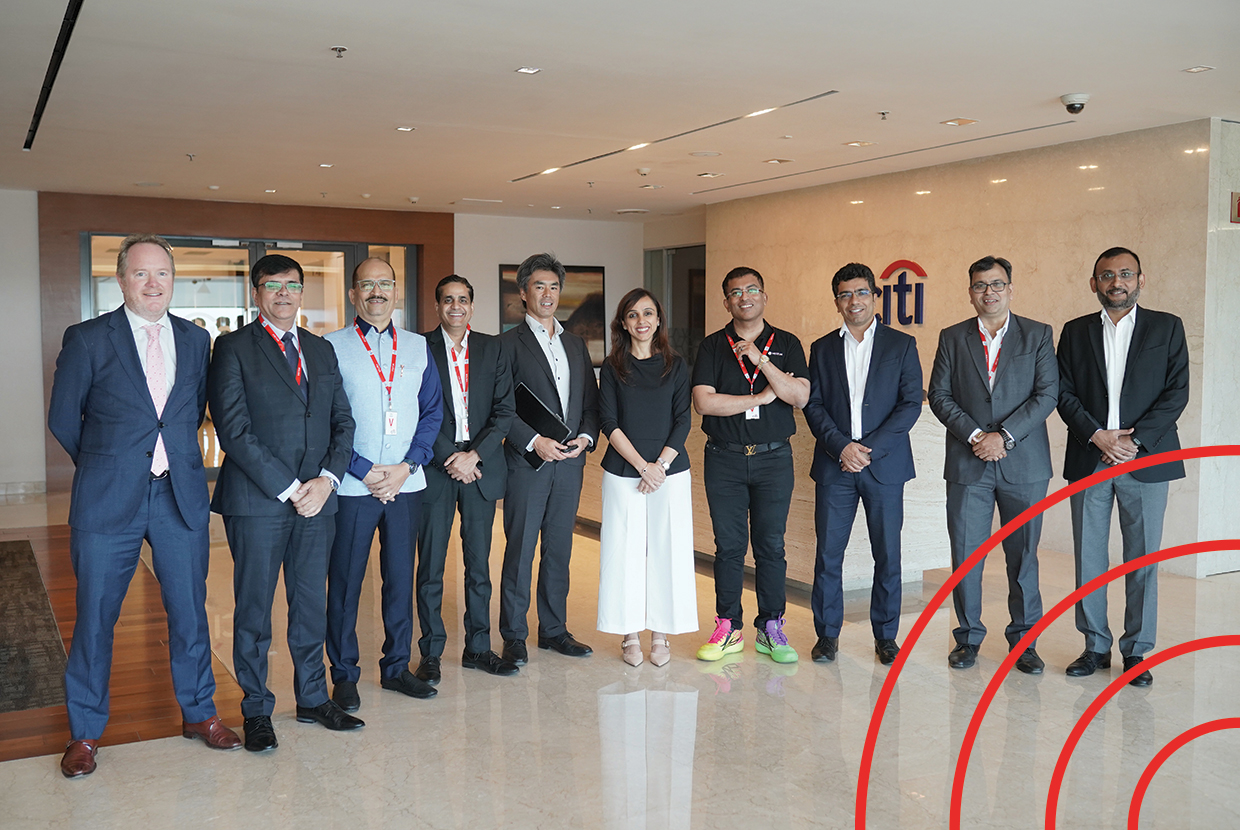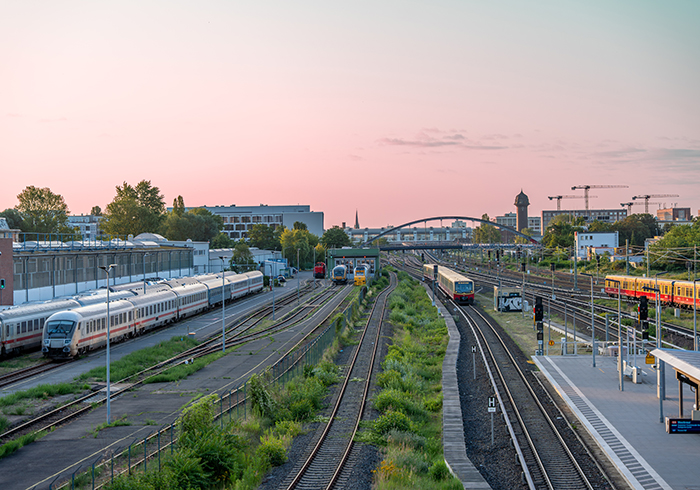India is seeking to drastically boost exports from its fast-growing economy at a time when the outlook for global trade is uncertain. A brief conflagration in the long-simmering conflict between India and Pakistan, just days before GTR India in Mumbai, underlined the geopolitical risks to trade.
On the sidelines of the event, we brought together a group of senior trade finance bankers, fintechs and the export credit agency, for a roundtable discussion that covered India’s strategy for boosting exports, the challenges of financing small businesses and the evolving relationship between lenders and fintechs.
Roundtable participants:
- Subir Das, executive director and member of the board of directors, Export Credit Guarantee Corporation
- Raja Debnath, managing director, Veefin Solutions
- Sanjay Desai, independent advisor, board member (moderator)
- Anuj Goyal, executive director, Standard Chartered
- Deepak Gupta, head of cross-border trade, ICICI
- Sunil Jain, head of trade products, HDFC
- Malika Juneja, director, trade finance, Citi
- Yoshitaka Morita, head of global trade finance department, Asia Pacific, SMBC
- Varun Wadhwa, head of trade sales, HSBC
Desai: Given all the geopolitical shifts currently influencing trade and financial flows, how do you think banks should be responding?
Juneja: The last five years have seen far more disruptive events than most of us would have seen in the previous 15 years. But these disruptive events have actually made organisations more resilient. We’ve had supply chain disruptions and geopolitical tensions one after the other, including one we managed to scrape out of over the weekend [the conflict between India and Pakistan]. And all of this has significantly changed the way organisations think.
One of the more prominent changes that have come up in my conversations with clients is a shift in mindset from ‘just in time’ to ‘just in case.’ For the last quarter of a century, ‘just in time’ seemed to work: it was about efficiency, quick turnarounds, tightly synchronised processes. But now, organisations are building for resilience. They’re thinking ‘what happens if my supply chain doesn’t come through?’ So instead of just a ‘plus one’ backup strategy, now it’s a ‘plus five,’ even a ‘plus 10’. Everyone wants to be ready with sufficient inventory, building supply chains across multiple markets, and trying to be immune to events anywhere in the world.
All that’s changing how companies finance their balance sheet. It’s no longer just about borrowing to make a supplier payment or cover a short-term gap. Financing now acts more like a shock absorber. Companies aren’t just managing working capital at a high level – they’re getting into the details. For example, we’re getting more customised requests, such as combining currency management with working capital, or for portfolio structures that help cover not just debtor risk, but overall market risk. While plain vanilla trade products still provide a solid platform, larger organisations are clearly moving toward more sophisticated structures.
Morita: Although we still see a lot of trade through Singapore, manufacturing bases are increasingly shifting to India these days, reflecting companies’ needs to make their supply chains more resilient. This is in line with what the Indian government is aiming for, and these multiple locations for diversification of manufacturing are definitely in line with many corporate strategies. They need to have an option, otherwise they are at risk of supply chain disruption.
Desai: India has a goal of reaching US$2tn in exports by 2030. How can banks contribute to achieving that goal?
Gupta: Banks can definitely play a critical role by enabling credit, through technology partnerships and as global connectors. But to achieve the US$2tn milestone by 2030, exports will have to grow by 2.6 times, which means there is a massive credit requirement, especially from MSME service exporters. MSMEs will play a major role in achieving the export target, especially in services.
Banks can offer a range of forex risk management products that would help exporters manage their exposure. If you look at recent numbers, only about 35% of MSME exporters are currently hedging their currency risk, which leaves a big opportunity for banks to step in. In addition to that, I believe there’s also scope for banks to introduce products that support faster access to funds when remittances come in.
Goyal: I think a few structural changes need to happen to reach the goal. The first is regulation and, most critically, how the RBI [Reserve Bank of India] treats capital allocation by banks. Another important issue is where banks structuring trade stand in the IBC [Insolvency and Bankruptcy Code] ladder. Are banks providing trade finance solutions considered operational creditors or financial creditors? These are questions that continue to puzzle people across the banking sector, and they need to be addressed.
Separately, a large part of the trade finance industry is still very focused on the immediate buyer-seller ecosystem. It hasn’t penetrated deep enough – especially into the MSME space. Technology should play a role here. There is not yet a standardised, industry-wide template that allows a bank to help large clients and MSMEs at the same time. We don’t have that yet, but once we have a holistic solution, I believe a lot of the current challenges will start to resolve themselves. But technology alone is just an enabler. Unless we get the fundamentals and the conceptual framework right, technology on its own won’t be enough. Without the government driving structural changes, no bank or consortium can make platforms successful.
Debnath: Picking up from what Anuj said about the consortium of banks versus regulation, my view is that if we sit around waiting for the regulator to act, we might be waiting until the cows come home. The regulator isn’t going to do anything. The regulations are what they are – our job is to figure out what we can do within that framework.
On the subject of a consortium, let me talk about the PSBXchange. For those who may not know, the PSB Alliance is a consortium of 12 public sector banks. They came together to figure out how they could jointly consume products and services. The idea was to leverage the size and scale of institutions like the State Bank of India to procure services at the best possible prices, or to access offerings that wouldn’t make sense for a single bank to engage with individually. There are too many platforms available, each dealing with one small part of the market. So the question became: can we create a unified platform in India where banks only have to connect once, and from that single integration, gain access to everything – no further integration needed?
We approached the regulator, but the regulator essentially said: ‘Why are you even coming to us? There’s no need. Go ahead and do it yourself.’ So we did. There was an RFP, which we won. The platform is going live in June. All 12 public sector banks have signed on. And now, it’s being opened up to private sector banks as well. We now envisage transactions worth several lakh crores flowing through this platform over the next three years. Because the interest is there. Everyone wants to connect. Everyone wants to transact.
Desai: How does this initiative differ from the Trade Receivables Discounting System (TReDS)?
Debnath: TReDS is a great concept and it’s doing very well, but it only has one product – supplier finance with recourse, for corporates. Our platform has all types of supplier and dealer finance structures, it is not just an auction marketplace. Additionally, on TReDS there are lenders on one side and corporates on the other. On PSBXchange, the corporates are replaced with various platforms such as fintechs and B2B marketplaces.
Goyal: TReDS is also successful because regulators mandated enrollment for some companies. The reach and volume come from private companies, but there has to be a driving force behind it, and that driving force is the government.
Das: We need small and micro enterprises to do a lot more exporting. Currently they contribute only around 3% of exports even though they make up around 45% of GDP. Sophisticated financial products won’t help them, they will only be helped if banks channel export credit in a very simple and cost-effective manner. We need to understand that small and micro businesses are constrained in virtually every respect. They struggle with documentation. Technological enablement is stagnant. Most of them don’t have any kind of organisational structure that could be described as even remotely professional and it can be difficult for them to access the support on offer. As a result, they’re left with no choice but to rely on conventional export credit and right now that is administered almost entirely by public sector banks.
SMEs aren’t motivated by the export target, they are simply following their own business goals. Companies that are doing just two or three export transactions a year need to be sparked up. And that is only possible by doing this receivable securitisation financing.
Desai: Does India have the inherent ability to be the global factory of the world?
Wadhwa: All the geopolitical uncertainties we’ve seen, even in just the last few weeks, tell us there is a need for corporates to diversify. Recently I met a corporate in India who had exports to the US, and they are now looking to set up a subsidiary over there to manufacture and sell to that market. I also met a US company that has a team of people sitting now in India, identifying more vendors – many of which are MSMEs – because they want to diversify their supplier base. Another exporter client has around 80% of their exports going to the US, so they are now considering diversifying to other markets.
All these conversations lead to one conclusion: India is in a very strong position as of now in the global scheme of things, which means that we will see more and more exports coming out of India in the next five years. This also means that the need for trade finance will go up, but that will also lead to these exporters trying to figure out ways to cut down risk. That means the demand for products like receivables factoring, inventory financing and LCs [letters of credit] will go up. We’ve seen a trend in which LCs were coming down and open account was going up, but over the next few years maybe we’ll see greater use of LCs. Banks have to be agile and innovative. I don’t think there is a standard product offering in the market now: banks are having to come up with more made-to-order or bespoke solutions, and digitalisation will be key.
Desai: India’s digital trade ecosystem is still very fragmented. There are lots of banks and lots of customers using different systems and platforms. How close are we to meaningful standardisation?
Gupta: It’s still a work in progress. There has to be a clear mandate from the government and regulators.
Debnath: Is it possible for the banks to do it with the regulator?
Juneja: The possibility is there, but the intent isn’t.
Debnath: Is there value in it for the bank? If there isn’t, the banks won’t do it and that’s when the government will have to apply a mandate.
Juneja: In terms of standardisation, I don’t think technology can be standardised across organisations – and this goes beyond banking. The nature of it is that it can be customised and used for specific purposes. There are certain aspects that could be standardised – perhaps certain products. For example, many banks have attempted to fully digitise the LC process, but there always seems to be one step that prevents it from becoming completely straight-through processed.
And that’s where the key question arises: as Raja mentioned, is there enough value for a bank to invest in making it fully straight-through? Because to achieve that, every single bank would need to make a significant investment. It always comes down to a question of return versus investment – how much are you required to put in, and what do you realistically expect to get back?
I think there is a distinction between banks investing in interoperability and investing in digitalisation within one’s own organisation. Banks are looking ahead, thinking about how they can improve the customer experience end to end. We’re a service industry at the end of the day. If you’re not trying to solve your customers’ problems, you’re not in the right business.
Desai: Yoshitaka, what’s your view on this as someone based in Singapore? The government there has launched initiatives of its own in this space.
Morita: In Singapore, the government, along with the private sector, service providers and various agencies, have made significant investments in different initiatives aimed at connecting various networks. Some of these efforts have been successful, while others perhaps less so.
One of the ongoing challenges is the structure of demand in trade – it’s never as simple as a one-to-one connection. It always involves multiple parties and multiple requirements. Not everything can be solved with a single, standardised approach, and that makes coordination quite difficult, despite the best efforts.
In contrast, a country like China might implement a single set of rules decided by the government. That makes things very straightforward because everyone simply follows the same direction. But there are pros and cons to that approach. It can also mean that if the government suddenly changes course, the banks must quickly adapt and follow, which brings its own set of challenges.
Desai: Turning to sustainability – is there a genuine demand for sustainability-linked customers? Is there a push from both customers and banks?
Goyal: Until the government steps in with better capital treatment for certain sustainable financing activities, it’s not going to work. Companies have sustainability goals, but some are more likely to sponsor a school for farmers’ children or something like that, instead of going through their banking channels. Clients, understandably, don’t want to deal with the extensive documentation that banks require to avoid issues like greenwashing. To be clear, I’m not suggesting there’s no real demand for sustainable finance – there absolutely is. But that demand often gets overshadowed by the burden of compliance, the lack of incentives, and so on.
At the moment, we often see a conversation between a client who’s very savvy, understands sustainability, and appreciates its importance, and a banker who’s trying to offer solutions at the same pricing as conventional products.
Jain: HDFC Bank has plans to become carbon neutral by 2031-32. India has also set a target of net zero by 2070. In my personal view, in a developing economy that is transitioning towards a manufacturing-based economy, achieving ESG goals will surely be challenging. However, all stakeholders in India are trying to contribute towards achieving the target.
Desai: Subir, how does an export credit agency factor into both expanding Indian manufacturing capacity and embedding ESG?
Das: From India’s perspective, our requirements and motivations are quite different from export credit agencies in many other countries. Our primary focus is employment generation, particularly basic employment, through supporting exports. Therefore, we have to be present wherever the government needs us. There are only around 60 such agencies globally, and in many ways, we function like a backup and not a backstop for the export credit sanctioned by banks.
If you look at India’s total goods and merchandise exports, about 95% are short-term exports, mostly raw materials and consumer durables. We have very little presence in capital goods. Now, on the one hand, the government is talking about moving up the value chain and supporting R&D, along with China-plus-one strategies – and that’s encouraging. But at the same time, the overwhelming policy drive is focused on supporting micro and small enterprises. These businesses often cannot easily integrate into global value chains. They may become advanced ancillary suppliers, but direct participation is a challenge.
I’ve mentioned that we have around 300,000 small exporters. If you include those not currently exporting but with the potential to do so, the number rises to around 600,000. That’s a huge opportunity – but where is the capacity? We’re working to stimulate that capacity, primarily by supporting export credit that is collateral-free, cost-effective, and easy to access and administer.
Wadhwa: We expect more and more MSME exporters to emerge and increase capacity over the next five years or so. The key question now is: how do banks and fintechs position themselves to respond quickly and effectively to the needs of these new exporters entering the market?
This is clearly a business opportunity, but it’s more than that, it’s the need of the hour. That’s why the government is also playing a significant role in creating platforms that enable these exporters to access the benefits they need. Take our role as a multinational bank. If a new MSME client approaches us wanting to export to a buyer in Germany, how can we help? We already have a strong presence in the MSME sector. But should our role be limited to providing finance? We can probably act in an advisory capacity as well.
This is where fintechs also have a vital role, particularly in bringing in the technology needed to make processes faster and more efficient for MSMEs. MSMEs often don’t have the time or patience to go through lengthy procedures – for example, waiting six months for a public sector bank to approve a working capital loan. So, can we develop financial instruments and platforms that cater specifically to their needs? TReDS is one example already in place. Another is what Veefin is doing with platform-based solutions.
But there’s a clear need for more such initiatives across the industry – platforms that make it faster and simpler for MSMEs to access finance and support.
Jain: Just wanted to add to Varun’s point on bank–fintech partnerships. In my view, both banks and fintech have distinct industry-specific advantages and overall both industries are working together to achieve common goal.
Desai: Can deep-tier financing work in India?
Debnath: Deep-tier financing works very well in China, but it is challenging in other countries. In India, we have the tech to do it, but we haven’t done it. We’ve spoken with banks here, and as you said, Varun, banks are doing a lot. But in my view, there are very, very few bankers who truly have an innovation mindset.
Firstly, you need that innovation mindset. And secondly, you need the ability to fight within the system to get things done – because it’s not in their control. Individually, they’re not in control. As regulated entities, banks always have to go through certain levels, through committees, multiple people, to get approvals. In your day-to-day priorities, with month-end and quarter-end targets, this sort of thing doesn’t take precedence. So, back to the point about investment: very few banks, in my view, truly invest for the future. Most are very month-end and quarter-focused. And that’s the reason fintechs survive and thrive.
Desai: Coming back to financing for MSMEs. The federal government budget in February had some announcements about increasing access to finance for those companies. Could that affect how financial institutions and platforms can help small businesses?
Jain: A major announcement that stands out for MSMEs is the change in the classification limits for MSMEs – the thresholds for turnover and investment have been significantly increased.
This change will allow MSMEs to grow their investments and still retain their MSME status, which is important. It recognises that as businesses become more efficient and adopt new technologies, they shouldn’t be losing their MSME classification simply because they’ve grown.
Now, regarding trade exchanges and banks: as was rightly pointed out earlier, trade exchanges still represent a relatively small part of the overall financing ecosystem. In the past two or three years, we’ve seen some traction; we’re now looking at over Rs2tn (US$23.2bn) in annual volume across the four trade exchanges. If there is insurance cover and secondary market sales, that may help boost volumes further.
At HDFC Bank, we follow a three-pronged strategy for MSMEs: appetite, access and approach. First, appetite: we hold around relatively very large market share in MSME lending. Second, access: this is where collaboration comes in.
On one side, with over 9,000 branches, we already offer strong physical access, and on the other side technology is helping us to extend digital access. This allows us to reach even the smallest segments in society.
Finally, approach: this is something traditional banks are uniquely positioned to manage. For instance, we have a dedicated MSME vertical focused solely on supporting MSMEs. This is where fintech may have a more limited role, and traditional banking expertise becomes critical, particularly when it comes to advisory services.
Desai: In 30 seconds or less, what are your final comments and what is your institution going to be doing over the next three years during a likely period of strong growth in India?
Juneja: Making sure we harness the potential that Gen AI and data analytics can provide. Data analysis can definitely help us improve the conversations that each one of us has with our clients, making sure that we can provide them intelligent insights.
Jain: Our focus is to be present wherever required to cater to all segments of the society and will continue to explore digitalisation to increase digital reach and to create further efficiency.
Gupta: I tend to echo what Sunil and Malika said. I think digital is one area the bank is focusing on to see how we can ensure the customer journey is seamless, and then provide a better customer experience.
Morita: Population and GDP define the economy and scale of the banks. We want to replicate what we have done in Japan into India, where we believe there will be significant growth, and we are looking at further investments.
Debnath: I was very happy to hear everyone talk about technology. But for me, the biggest thing that keeps me awake right now, and what we are focusing on, is how to incorporate Gen AI in every aspect of work that we are doing. For work that comes up, we ask whether AI can do it. That approach will translate into the products and services that we are able to offer to people around the room.
Das: We’ll continue to do this primary work of supporting the market through counter-cyclical intervention. These geopolitical disruptions are happening and ECGC is expected to help SMEs survive this disruption.
Wadhwa: One core focus is a mindset change from selling products to providing solutions. Because the corporate world has changed and there is nothing standard that we are selling to.
Second, on the technology side, corporates in trade have eliminated paper, but they have not necessarily adopted technology integrations. We are nowhere close to what the industry should be.








